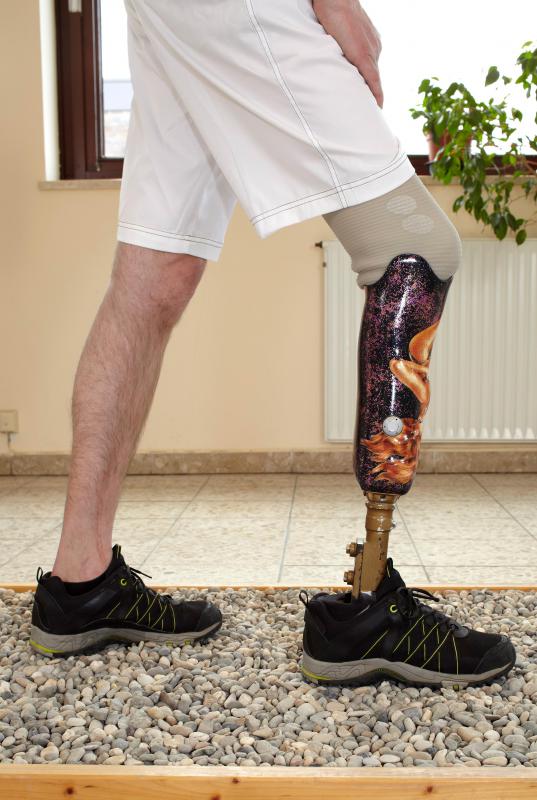At WiseGEEK, we're committed to delivering accurate, trustworthy information. Our expert-authored content is rigorously fact-checked and sourced from credible authorities. Discover how we uphold the highest standards in providing you with reliable knowledge.
What is a Prosthetic Group?
A prosthetic group is a company or team of medical professionals trained in prosthetics, artificial extensions of missing body parts. Common prosthetic devices include the hands, feet, arms and legs. The medical professionals working within a prosthetic group are trained in the highly specialized field of biomechatronics. Biomechatronics comprises the study of biology, anatomy, mechanics and electronics. It is the science of blending mechanical devices to enhance motor control or function.
A prosthetic group specializes in devices to attach mechanisms to the muscles, bones and nervous system to aid in motion and function. It is commonly utilized when a body part or limb are missing. This can be due to trauma, such as an accident, or a congenital defect. A congenital disorder or defect is when damage is sustained to the developing fetus.

A prosthetic group can attach a prosthetic device to a partially or fully missing limb. Prosthesis can also be used in organs such as the heart in the form of artificial heart valves. Other man-made mechanical devices include replacements for eyes, parts of the lungs, and gastric bands. Gastric bands are devices placed on the top portion of the stomach and aid obese patients with weight loss.

The most common prosthetic devices used by a prosthetic group are for the limbs. Lower extremity prosthetic devices can include man-made replicas of any part of the foot and leg. Upper extremity prosthetic devices can include any part of the hand and arm.
Prosthetic devices can vary according to the amount of function they can provide. Some prosthetic devices are manual. These artificial limbs are commonly attached to the remainder of the extremity through the use of strapping mechanisms or suction. They utilize existing or remaining muscles to perform an action.

Robotic prosthetics are also a part of a prosthetic group practice. These high-tech replacement limbs rely on biosensors, which are attached to the remaining structure or musculature of the limbs. They then detect signals from the musculature or nervous system. These signals relay information to a controller. The controller processes the feedback and sends it to actuators. An actuator is a mechanical device which mimics muscle action to produce movement and force. The controller is also responsible for the monitoring and control of the device.
A prosthetic group can also provide the user with a cosmesis prosthetic. Cosmesis is the creation of realistic-looking limbs. A more expensive option for those requiring the assistance of an artificial limb, these lifelike reproductions can come with personalized features such as hair, freckles, fingerprints and even tattoos.
AS FEATURED ON:
AS FEATURED ON:













Discussion Comments
Can you build a prosthetic stomach?
Post your comments